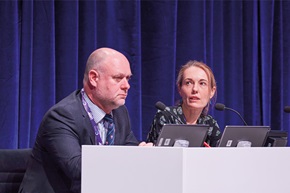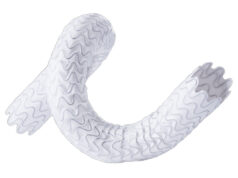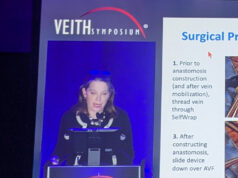
During this year’s Charing Cross (CX) International Symposium (23–25th April, London, UK), the first day saw two separate sessions titled ‘Real Cases, Real Problems’, split across the Vascular Access Masterclass and Renal Interventions Controversies sessions. Each session looked at an example of a real case and asked the audience to suggest treatment options, exploring how different clinicians would solve issues that occurred in each case, before exploring how the patients were treated at the time.
The first of the sessions, which took place in the morning portion of the Vascular Access Masterclass, was chaired by Nicholas Inston (University Hospitals Birmingham, Birmingham, UK). Kicking off the session, Inston stated that “what we have heard from CX over the years is that people like cases, and people like to discuss them to make things a little more like the real world. So we’ve introduced a bit more of that this year”. The case of the first session regarded a 65-year-old female who had a right brachiocephalic (BC) arteriovenous fistula (AVF) created eight weeks prior to the symposium, but when cannulation was attempted two weeks following initial AVF creation, there was a blow on dialysis, along with extensive bruising over her arm. When cannulation was attempted again, there was no flow in the fistula and so a venogram was requested.
Displaying the venogram from the case, Inston invited comments, to which there were several suggested courses of action presented by clinicians from around the globe, leading to an international discussion of different treatment options.
The second session, chaired by Kate Steiner (East and North Herts NHS Trust, Stevenage, UK) as part of the afternoon’s Renal Intervention Controversies session, looked at two cases, both of which had more of an “interventional radiology flavour”, as Steiner stated. Rob Jones (Queen Elizabeth Hospital, Birmingham, UK) was the first to present his case—a 64-year-old male with previous failed bilateral brachiobasilic (BB) AVFs, a left axillary graft failure. He had a history of peripheral vascular disease, with a tunnelled catheter in 2021. He presented with head swelling, with blocked right sided central vein.
The last case, presented by Narayan Karunanithy (Guy’s & St Thomas’ NHS Foundation Trust, London, UK) was of a 46-year-old female patient with end stage renal failure secondary to type 1 diabetes mellitus. She had undergone a pre-emptive left BC AVF creation, and later underwent simultaneous kidney-pancreas transplant that was functioning. Three months after transplantation during the inpatient hospital stay, she developed gross left arm and breast swelling. The computed tomography (CT) venogram had demonstrated likely line related central vein stenosis, focal cephalic arch stenosis and ‘high flow’ in the AVF. The subsequent discussion with multidisciplinary audience participation explored the options of central vein and cephalic arch balloon angioplasty and stenting, flow reduction procedure and other novel solutions. The panel and audience multidisciplinary team came to the consensus that the best course of action was to discuss with the patient and try to “improve life for the day, not for five years’ time,” as Inston framed it, and tie off the fistula to allow for a better quality of life for the patient.












